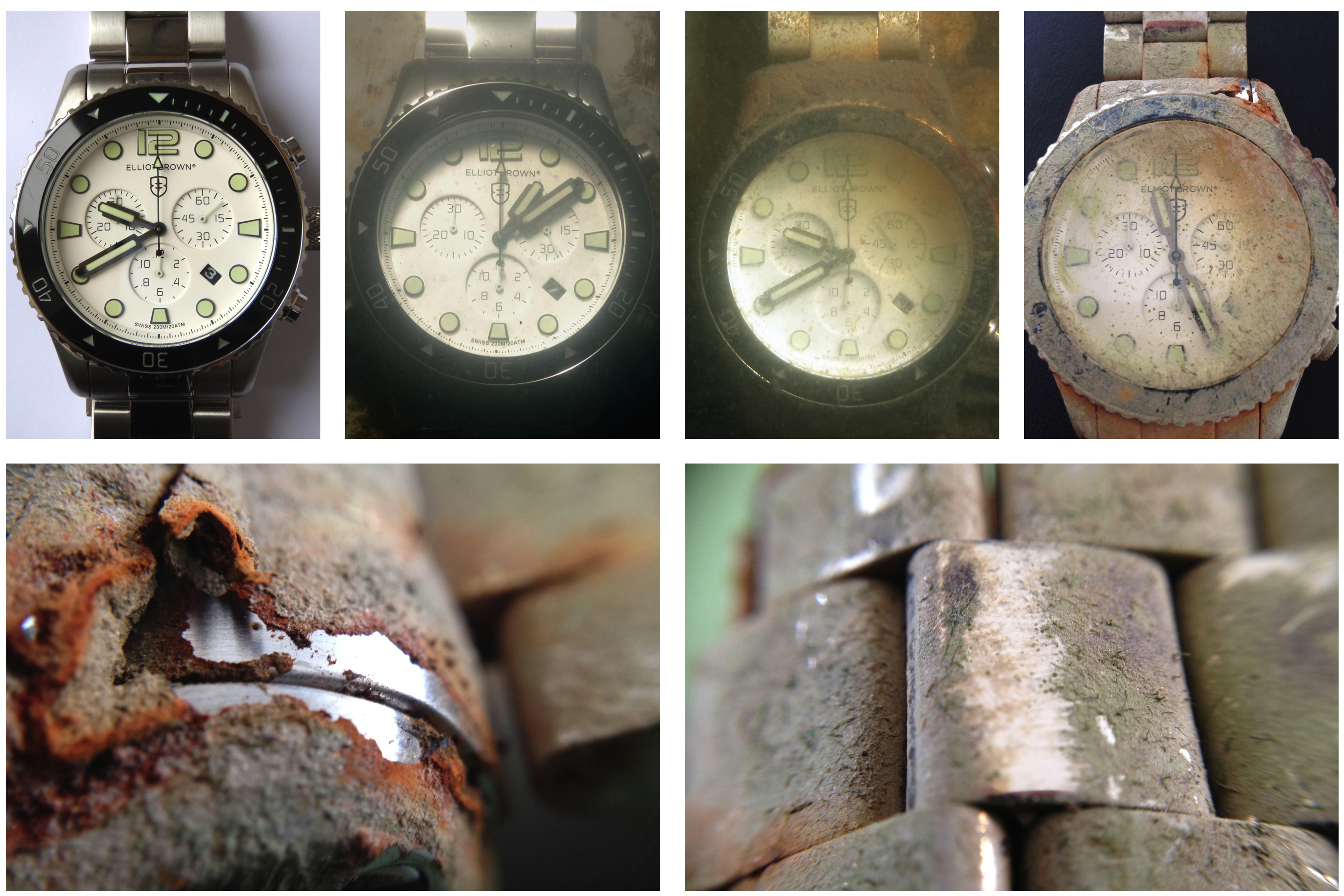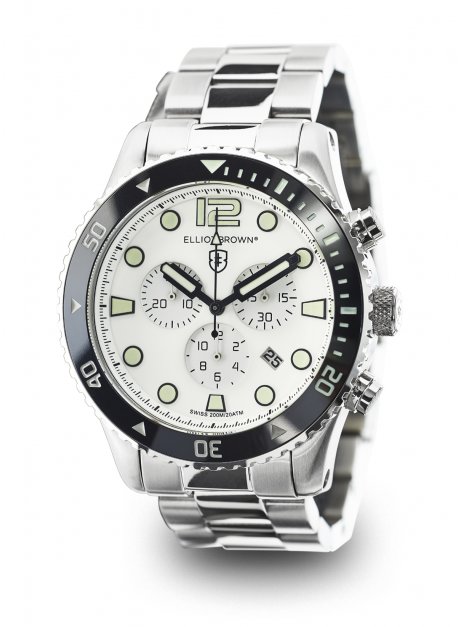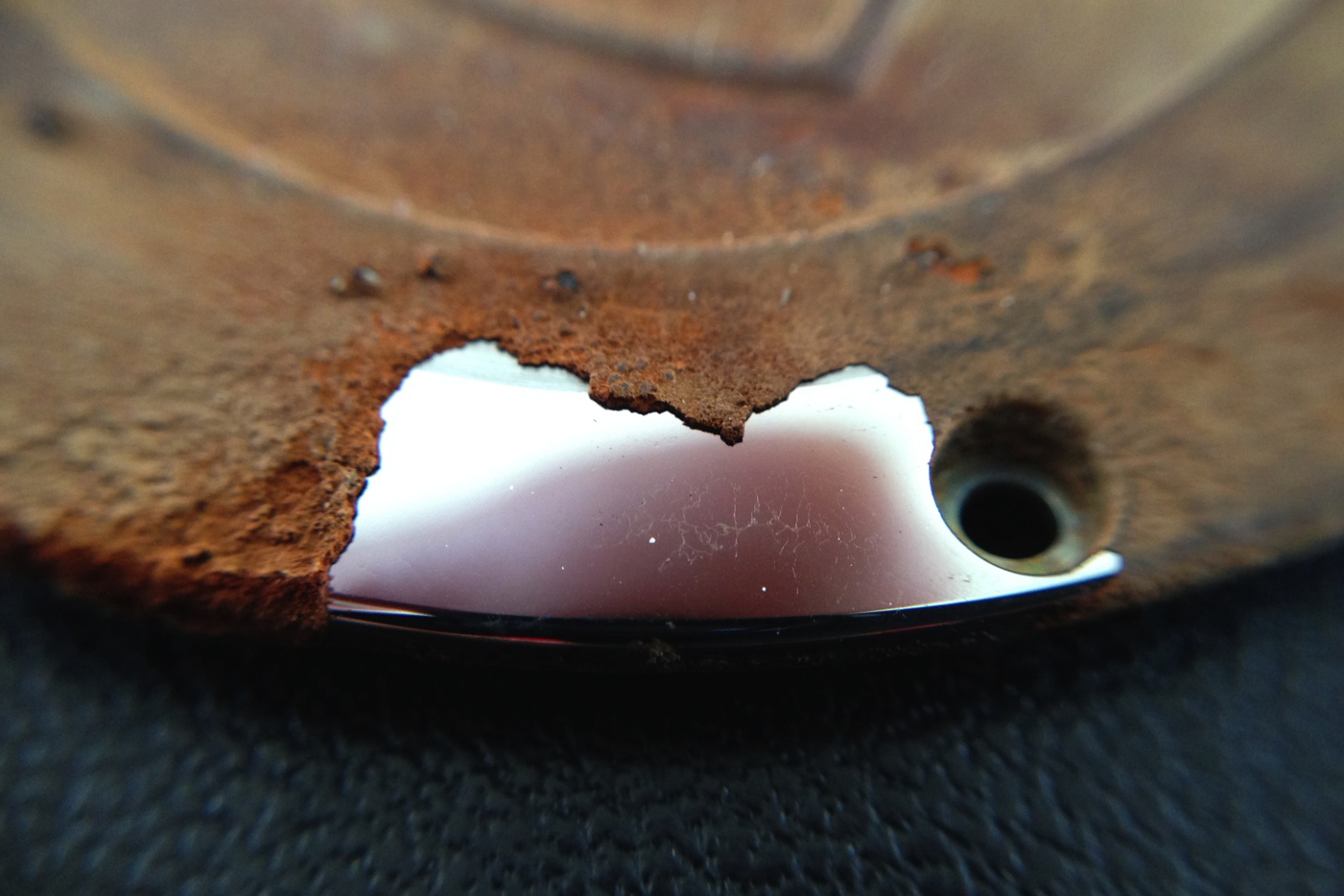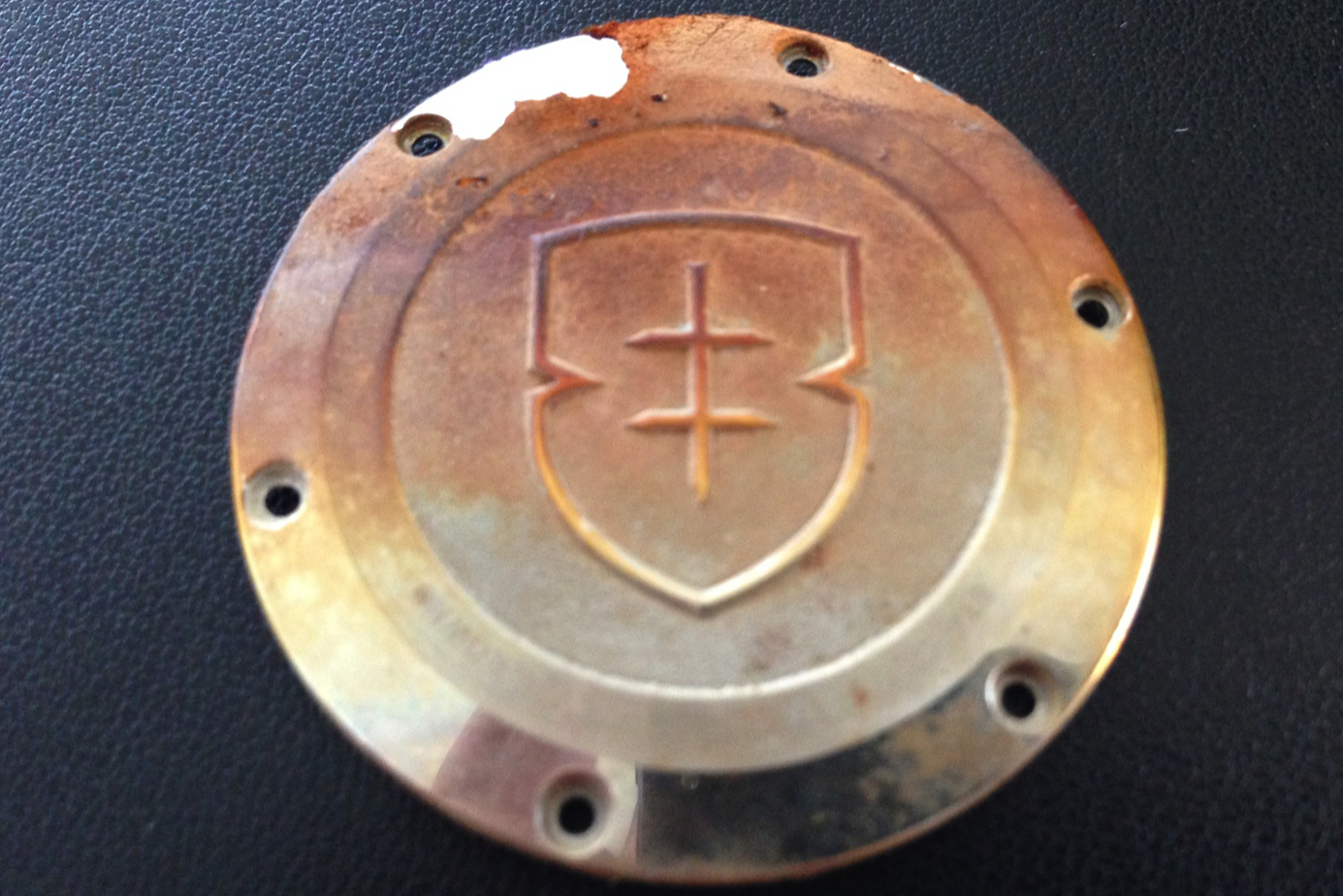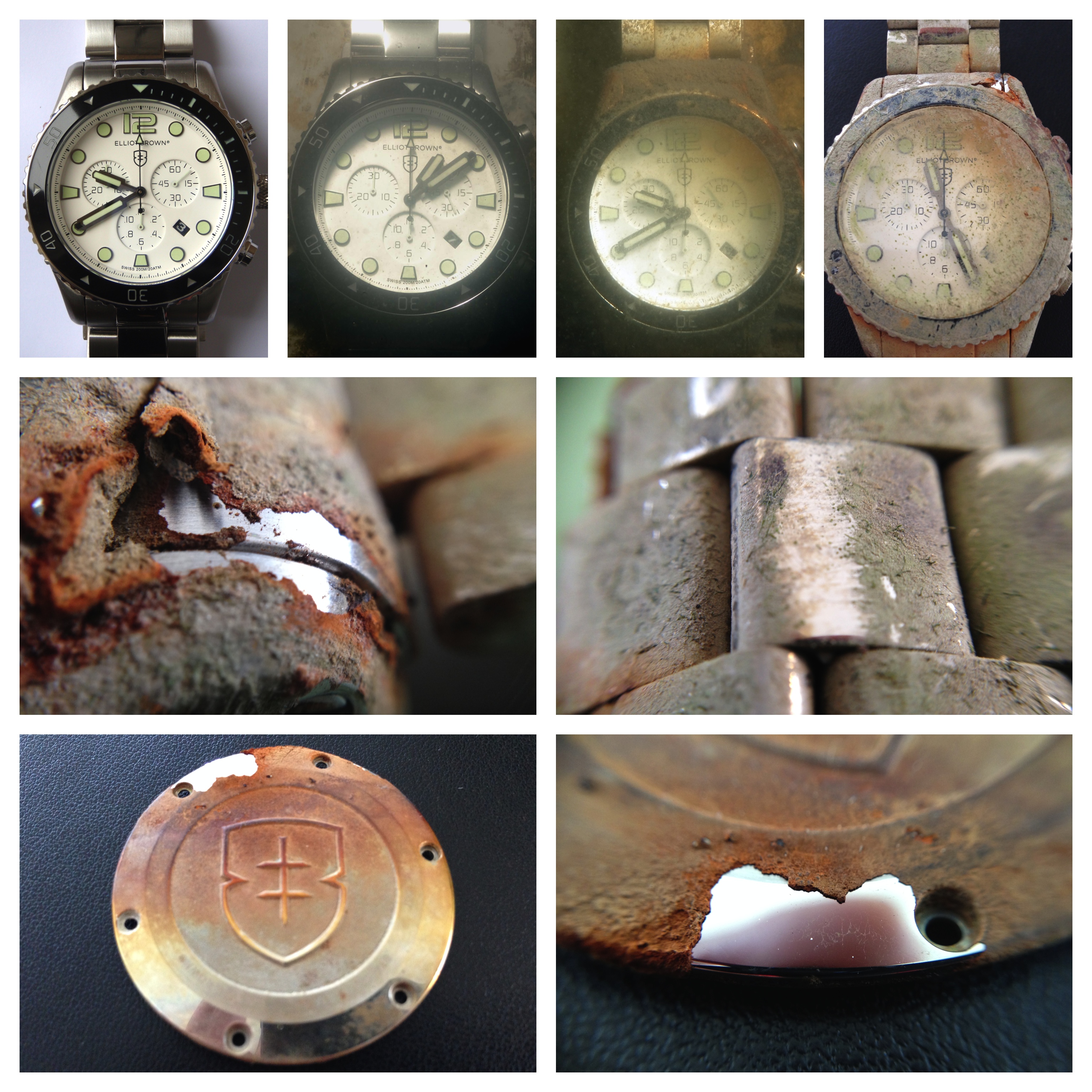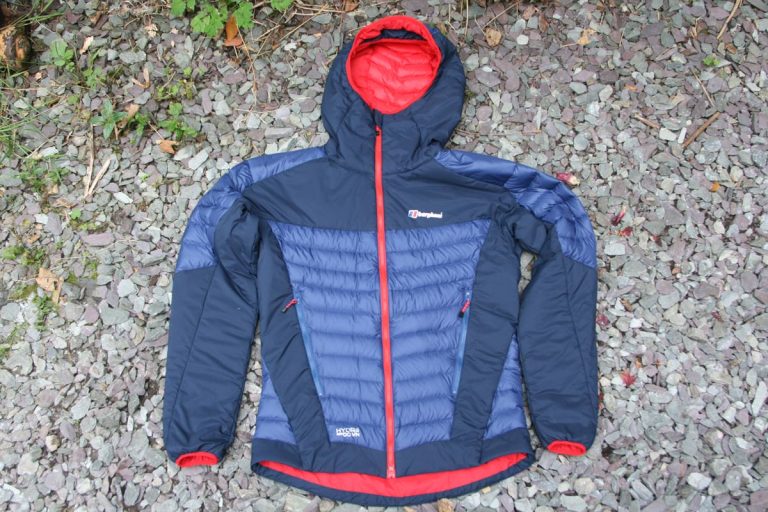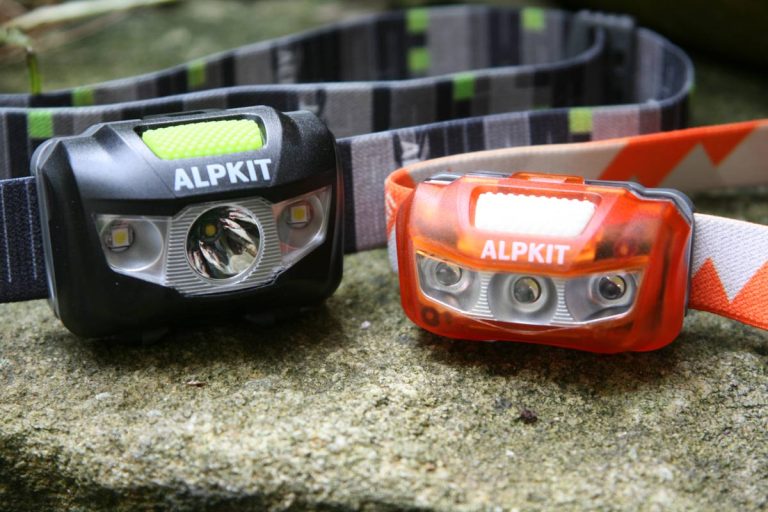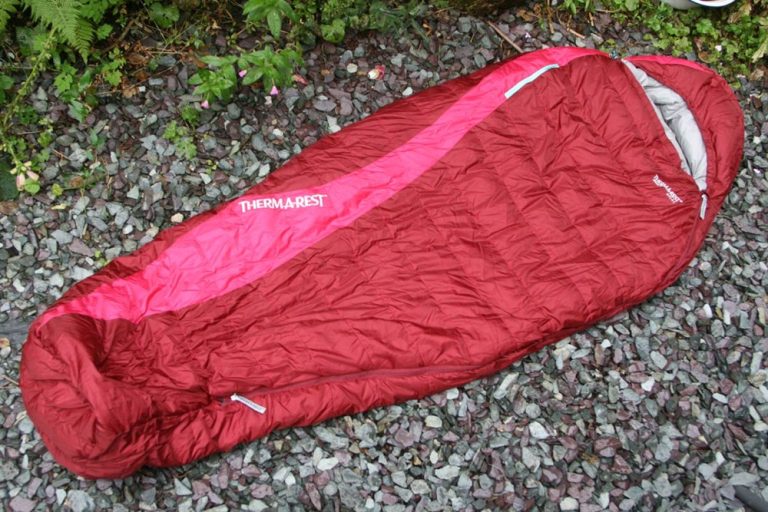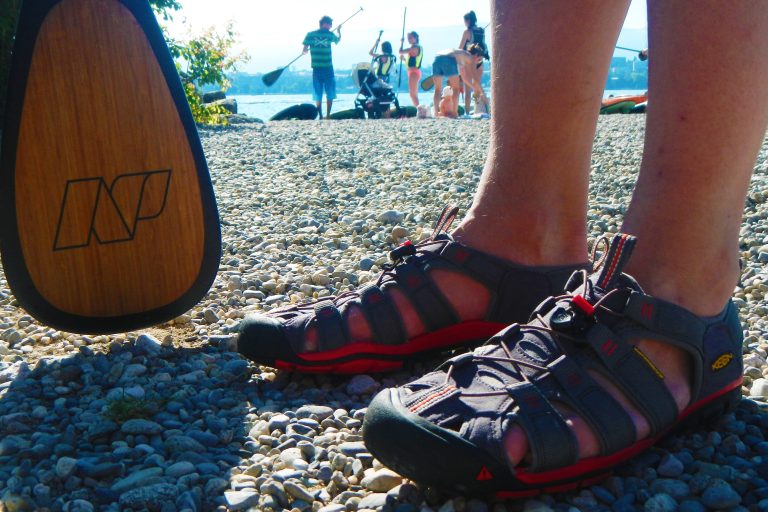Elliot Brown’s ultimate test – results revealed…
British watch brand Elliot Brown tested the Bloxworth 929—007 to find out what it would look like after spending six months submerged in freezing cold saltwater and sediment at the bottom of Poole harbour – the equivalent to 12 years daily use in salt water.
The £550 Bloxworth 929—007 (pictured above) emerged virtually unmarked – it was and still is ticking. Although it appears rusty this is simply surface scale that came off to reveal a pristine timepiece, demonstrating the importance of using quality materials such as 316L marine grade stainless steel.
This particular experiment proved that the watch could withstand one of the toughest tests a watch could endure. It doesn’t stop there. Every single component of each watch is individually checked for cosmetic defects when they are delivered to the factory and then thoroughly examined for specification and functionality. Here’s an impressive list of tests that each component is put through.
The tests the watch was put through
Crystals: A 16.5g ball bearing is dropped from half a metre above the glass three times to check it’s hardened and tempered correctly.
Pushers: Each pusher is pressed 5,000 times to simulate years of wear and tear. They must function perfectly after the test and feel the same when pressed – no stiffer, no looser.
Strapping: The ends of the leather straps are clamped down and the strap is flexed in half then stretched out 5,000 times to ensure the leather won’t crack. A 1kg block pressing on a felt pad is dragged backwards and forwards across the surface 150 times dry and 150 times soaked in water to ensure there’s no loss of colour. Every type of strap in the range (leather, bracelet, webbing, canvas) is subjected to a traction and torsion test – a 5kg weight is hung from one end of the strap whilst the other end is repeatedly twisted back and forth through 180 degrees 5,000 times.
Water-resistance: Every watch case is pressure-tested in air to 75% of the stated water-resistance – 150m or 15 bar – when they are manufactured. Air-pressure is used instead of water because it’s non-destructive and faster than water-testing. After the watches have been fully assembled, they are pressure-tested again to 150m in air to make sure they’re able to withstand full ‘wet’ pressure-testing. Pressure testing watches individually is time-consuming and expensive, which is why brands often only test a few watches from each batch.
Every completed watch is then wet pressure-tested in a 30cm-deep steel pressure vessel of water to 20 bar/200m for 10 min, and then placed on a hot-plate at 40-45c for 15 minutes. A drop of water between 18 and 25c is placed on the glass, and after a minute, the watches are wiped dry and checked for condensation under the crystal which highlights any leaks.
Shock-resistance: A percentage of every batch is tested for shock-resistance by striking them twice with a 3kg pendulum hammer – once on the left-hand side of the case and once on the crystal, which simulates the impact the watch sustains if it falls from 1m onto a hardwood floor. As an additional real-world test, a selection of watches from every batch is dropped 4 times in succession from a metre onto a hardwood surface.
Timekeeping: The assembled watches are put through a ’burn-test’ for 24 hours in 4 positions – face-up, face-down, crown-up, and crown-down, to test for timekeeping issues.
More information
For more details on the Bloxworth 929—007 or for any other of Elliot Brown’s products visit www.elliotbrownwatches.com.

